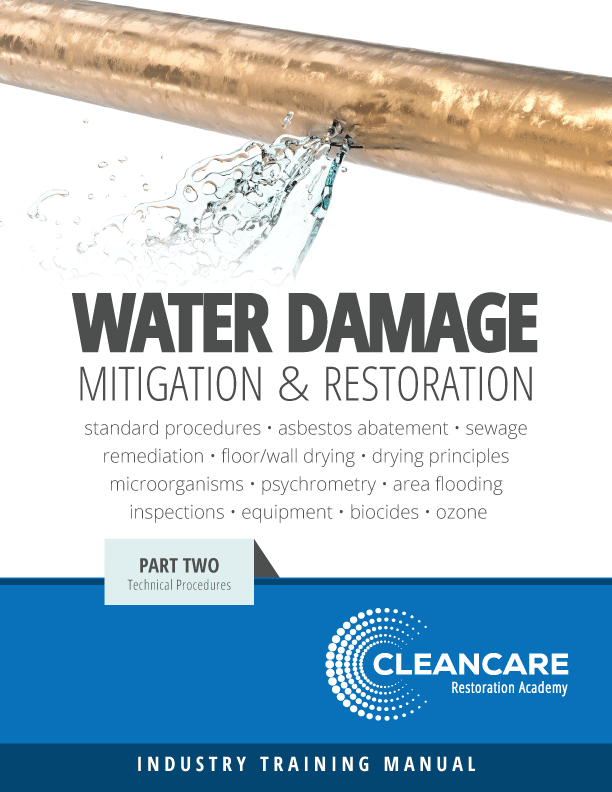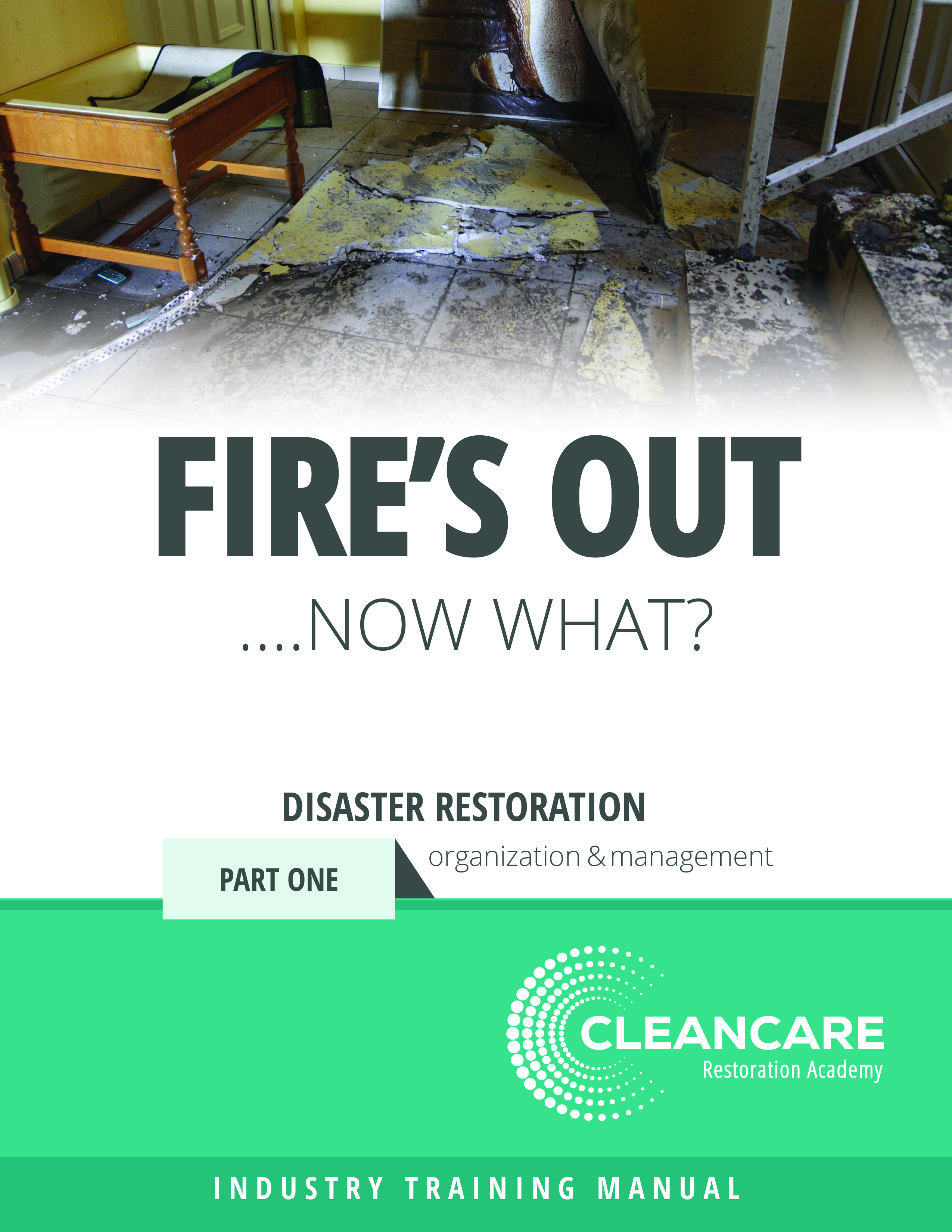The “Contract Wars” – Part II
Beware of special laws for residential contracts






As discussed in Part I of this series, which appeared in the October issue of R&R, a contract is an agreement voluntarily entered into by two or more parties with the intention of creating a legal obligation. Moving on from the basics, here we will discuss home improvement laws and the most important legal provisions for any restoration contract.
Home Improvement Laws
In Part I, we explained that a contract may be oral, written or implied. However, the best practice in the cleaning and restoration industries is to always use a written contract prepared by an experienced construction lawyer. In fact, in many states, a written “home improvement” contract is required by law for residential jobs.
The home improvement statutes require many different specific provisions in residential contracts. For example, here are just some—not all––of the items that must be included for California jobs, and many other states have similar ones:
- Exact price of the work stated “in dollars and cents”
- Approximate commencement and completion dates
- Scope of work and materials to be used
- A statement that change orders only become part of the contract if in writing and signed prior to commencement of change order work
- Customer’s signature before any work begins
- Name and phone number of the contractor’s liability insurance carrier
- A statement of whether the contractor has workers compensation insurance
- Contractor’s State License Board contact information for customer complaints
- Notice of the three-day right to cancel the contract; and
- A statement that it is “against the law for a contractor to collect payment for work not yet completed” but may require a down payment not to exceed 10% or $1,000, whichever is less
The first five on the list should be included in all cleaning and restoration contracts even if they are not required by law, because they accelerate collections and minimize liability.
Many states even control the size font required for many contract provisions, and the rules change from time to time. There is a natural impulse to begin emergency service work with a simple one-page work authorization. Stop yourself and remember that the penalties for violating these laws can include disciplinary action by the state license board and criminal prosecution. Cleaners and restorers must retain qualified counsel who is abreast of the latest changes in construction law to verify that their contracts contain the elements necessary to form an enforceable contract under the laws of the jurisdiction where the project is being performed.
The best business practice is to verbally discuss all the principal terms of a transaction with a customer before executing the contract. In fact, in some states, it’s legally required. The rationale behind the law is reasonable. Ideally, the contract would primarily be a statement of what has already been agreed to orally between the parties. This way, the customer has no surprises when reviewing the contract and the execution process is much smoother. Even the most sweetly-worded contract is still a cold inanimate object. It is no substitute for warm customer relations. If the communications are good, there will be no surprises for the customer when he reads the contract. The fewer surprises, the fewer legal disputes.
MVLP’s of Restoration Contracts
Every restoration contract, including home improvement contracts, emergency restoration contracts, and all others, must have: an identification of the parties, the scope, and the price for the work or, if legally permissible, the means for determining the price. These are the most valuable legal parts (MVLP’s) of a restoration contract.
Scope
The scope is the most important part of any service contract. Before reducing it to writing, it should be thoroughly discussed in an effort to reach a meeting of the minds (although the law in most states does not require an actual meeting of the minds). Of course, on some emergency service projects, the precise scope of work may not be known at the outset, so the written agreement should identify the affected areas and include a reasonable description of the known work “based on initial visual observation and subject to change as the investigation continues.” Should they arise, those changes should be documented in a change order signed by the customer.
Parties
Regardless of whether the contract is executed by the owner or an agent, the contract must properly identify the customer. The “customer,” for our purposes, is the party responsible for payment of any amount not paid by insurance. The identity of the customer may not always be obvious, especially on complex projects. Ask yourself “where will the money come from?” The answer to that question is “the CUSTOMER.” The customer must be clearly identified as such on the top of the contract. The identity of the customer should be established in the very first phone call, and if the caller is not the customer, then it’s time to make an effort to contact the customer directly, even if the original call came from an authorized agent.
If the owner has retained a third party such as a property management company or has vested a friend or relative with authority to bind the owner to a contract, the third party is an “actual agent” who can bind the owner to a contract. This agency should be confirmed in writing. But what if the owner didn’t do any of that and is denying that the person who signed your contract was authorized. If an owner has taken actions that will lead a reasonable contractor to believe the owner has given contract-signing authority to a third party agent, the third party is an “ostensible agent” who can bind the owner to a contract.
Price
As you are aware, restoration projects lend themselves to a variety of different pricing structures. The preferred method is a fixed or lump sum price. It is the most effective in minimizing confusion and billing disputes. In many jurisdictions, e.g., California, fixed price contracts are required by statute for all residential work.
The time and materials, or “rate and materials,” pricing method may be acceptable in other scenarios. It provides customers a comfort level of knowing they are only paying when work is being done. However, they sacrifice the level of predictability that comes with a fixed price contract. Owners commonly complain they never would have hired the restoration contractor if they had known what it was going to cost.
Many insurance companies prefer unit pricing from software. This pricing method presents some disadvantages at the contracting level because the pricing system is too complex to articulate in a time and materials contract. There are too many unit prices to include them all in a written contract, and merely referencing the name of a software program––“Contractor will perform the work at the prices set forth in ABC Pricing Software”––does nothing to educate the customer about the costs he will incur. Preferred vendor work often must be billed using the unit price model. Whenever possible, however, it is preferable to have the customer’s commitment as to a specific price.
The Purpose of the MVLP’s
The contract is your go-to document for scheduling, scope, collections, preparing a case for trial, mediations, arbitrations and more. Including the 3 MVLP’s in a signed contract can prevent many headaches along the way. An ounce of legal planning is worth a pound of prevention in the high-risk business of restoration.
Looking for a reprint of this article?
From high-res PDFs to custom plaques, order your copy today!












